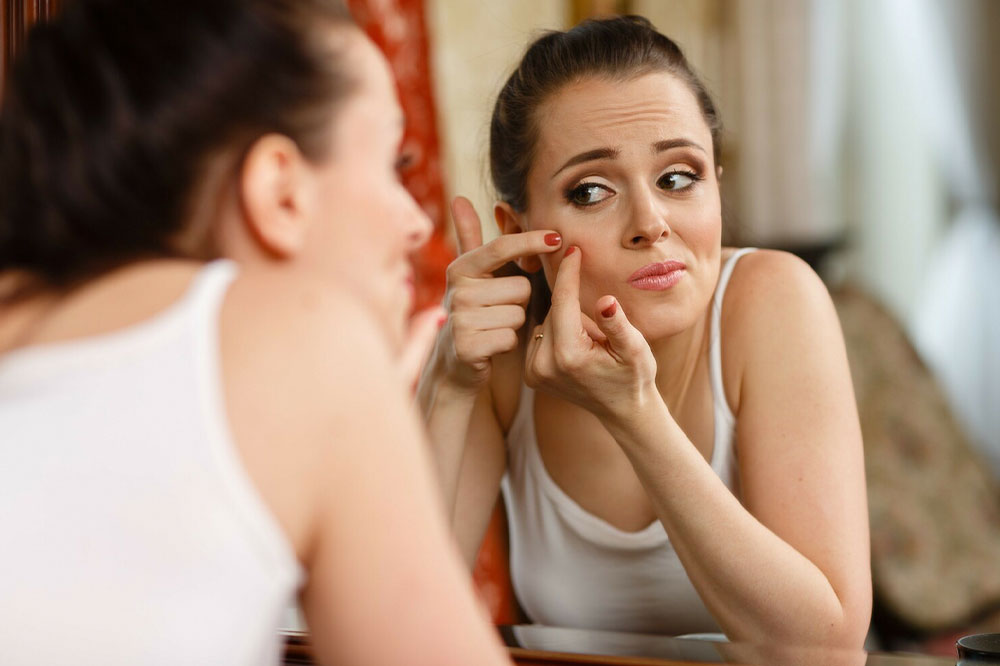
Acne – Causes, symptoms, and management
Acne is a skin condition wherein the hair follicles become plugged with dead skin cells and oil. It results in pimples, blackheads, dry and oily skin, and whiteheads. Acne is prevalent among teenagers. However, it affects everyone, regardless of their age. While you can find effective acne treatment options, acne is mostly persistent. The bumps and pimples heal gradually, and when one starts settling down, the other seems to crop up.
Depending on its severity, acne may leave scars on the skin and often cause emotional distress. Hence, the earlier you begin the treatment, the lower the probability of such issues.
Symptoms
Some symptoms associated with acne are as follows:
- Cysts: They are painful pus-filled lumps under your skin.
- Nodules: They are big, painful lumps below your skin.
- Whiteheads: They are clogged pores with a white top.
- Blackheads: They are clogged pores with a black top.
- Papules: They are discolored, tiny bumps, usually red to purple or darker than your natural skin hue.
- Pimples: They are pus-filled bumps.
Acne may be mild and lead to occasional pimples and inflammatory bumps. People with severe acne develop cysts and nodules.
Causes
When the skin’s pores are plugged with dead skin, oil, or bacteria, it causes acne. Every pore on the skin opens to a follicle. The follicle is composed of a sebaceous gland and hair. This oil gland yields sebum that travels up the hair, off the pore, and onto the skin. Sebum keeps the skin soft and lubricated. Any mishap in this lubrication process can result in acne.
Acne occurs when the following happens:
- Bacteria accumulate in the pores.
- Dead skin cells build up in the pores.
- The follicles yield oil in excess.
These are potential causes of pimples. They develop when bacteria grow in a clogged pore, and the oil finds no way out.
Treatment
Here are a few popular treatment options for acne:
- Laser resurfacing for acne
How it works
It employs nonablative or ablative lasers to amplify the skin’s appearance and address facial flaws. Ablative lasers remove the skin’s outer layer and heat the underlying skin to stimulate collagen growth, leaving you with smoother skin.
Nonablative lasers are less aggressive and have a shorter recovery time. They also stimulate collagen production. Fractional lasers in both procedures leave untreated tissue columns for reduced side effects and faster healing.
Risks
Please note a few potential risks are associated with laser resurfacing for acne, mainly with ablative treatments. Side effects include temporary acne flare-ups, itching, swelling, milia, or redness. It might also result in infections like herpes virus. Skin color changes may also happen, especially in people with darker skin. Ablative laser resurfacing for acne also causes scarring.
Cost
The average cost for ablative laser resurfacing is approximately $2,509, while nonablative procedures are around $1,445.
- Other treatment options
For mild acne
These include gels, soaps, lotions, and creams with active ingredients like azelaic acid, sulfur, benzoyl peroxide, salicylic acid, retin-A, and resorcinol. To avoid skin irritation, dermatologists recommend starting with the lowest strengths.
Moderate to severe acne
Speak to a dermatologist for a stronger topical or oral treatment option to combat bacteria and lower inflammation. Your doctor may recommend the following certain anti-inflammatory treatment options to reduce scarring, topical retinol to unclog pores and avoid blackheads or whiteheads, and oral retinoid for severe acne if you are non-responsive to other treatment methods.




